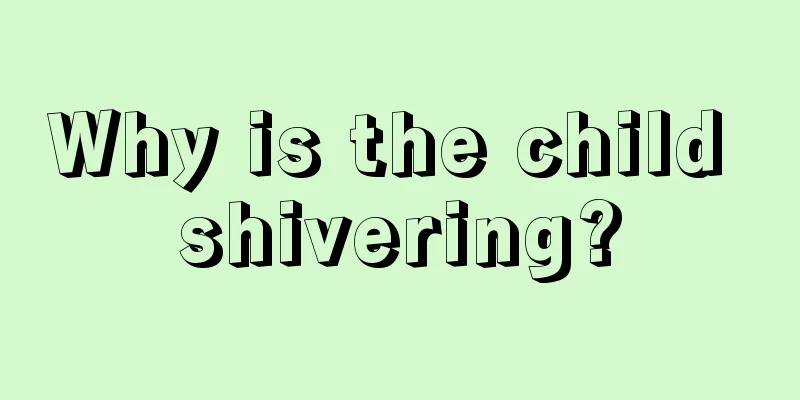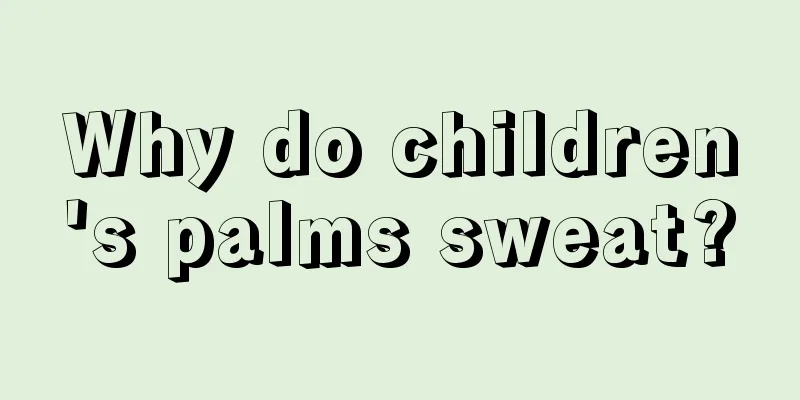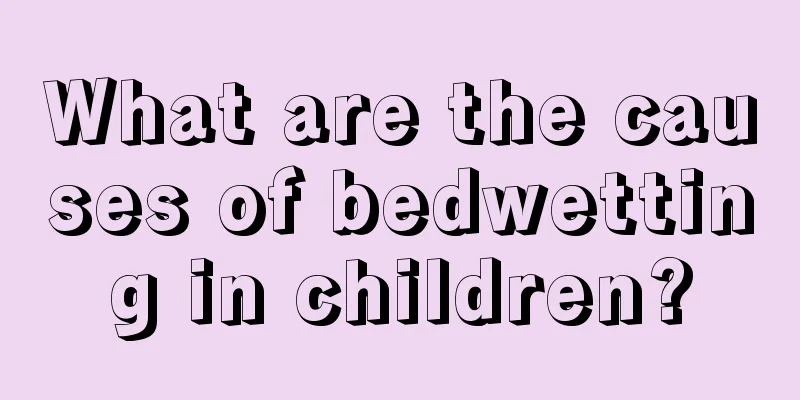Why is the child shivering?

|
Children's tremors, also known as convulsions, are a common disease among children and are also a health problem that can have a great impact on children's physical health. Because this may indicate that the child has problems such as hypocalcemia, epilepsy or high fever, so after the child shows symptoms of convulsions, you must respond promptly and take the child to the hospital to find out the cause and receive treatment! 1. Causes of convulsions A convulsion is an involuntary, paroxysmal, strong contraction of the whole or local muscles. The seizure can be tonic (continuous muscle contraction), clonic (intermittent muscle contraction), and mixed (sequential tonic and clonic contractions). Seizure-related disorders: hypocalcemia and hypomagnesemia, convulsions, epilepsy. High fever, epilepsy, tetanus, rabies, calcium deficiency, etc. can all cause convulsions, which are systemic. There are also local ones, such as gastrocnemius (commonly known as calf) spasms, which are often caused by rapid exercise, work fatigue, or severe twisting of the tibia, and often occur when lying down or sleeping. 2. Symptoms of convulsions 1. Generalized tonic convulsions: The muscles of the whole body are rigid and twitching in waves, showing opisthotonos (the head is tilted back and the whole body is bent backward in a bow shape), the eyes are rolled up or staring, and the patient is unconscious. 2. Localized convulsions: only local muscles twitch, such as twitching of only one side of the limbs, or twitching of facial muscles, or twitching of fingers or toes, or eye movements, nystagmus, blinking, staring, etc. Most are unconscious. The above convulsions can last for a few seconds or several minutes, and in severe cases can last for several minutes or recur repeatedly. Convulsions lasting more than 30 minutes are called persistent state convulsions. 3. Febrile convulsions: mainly seen in children aged 6 months to 4 years who have convulsions when they have high fever. High fever convulsions are short-lived, and consciousness recovers quickly after the convulsion. They often occur in the early stages of a fever. During a fever, there is often only one convulsion. Brain diseases and other serious illnesses can be ruled out, and an EEG will be normal one week after the fever subsides. 3. Prevention of convulsions Prevention is achieved by actively treating the primary disease according to its cause. For example, epileptic patients need to take medication as prescribed by the doctor. If they suddenly stop taking the medication, even for 1 to 2 days, it will cause epileptic convulsions. For example, children with high fever are prone to convulsions, and timely fever reduction can prevent convulsions. Tetanus can cause convulsions, so tetanus vaccine should be given to prevent tetanus. Rabies can cause convulsions, so it is important to prevent dog bites. If you are bitten by a dog, go to the hospital for treatment immediately. Calcium deficiency can cause convulsions, so children need to supplement calcium (eat more calcium-containing foods, take calcium gluconate, calcium tablets, etc. when necessary), and also get more sun exposure, take cod liver oil, etc. To prevent gastrocnemius cramps, do adequate warm-up exercises before strenuous exercise or swimming. To prevent cramps in this area when sleeping at night, avoid over-tiredness during the day and avoid exposing your legs to cold at night. |
<<: How much water should children drink every day
>>: How to develop children's intelligence
Recommend
Boys will grow taller after spermatorrhea
For adolescent boys, nocturnal emission is a very...
Can children use buckwheat pillows?
Nowadays, there are many pillows on the market. D...
What foods are good for children to eat to improve their memory
It is normal for children to have poor memory and...
What should I do if my child has cavities?
Children are still very young and very ignorant, ...
What should I do if children’s hands are peeling?
We all have experienced peeling skin. There are m...
Reasons why children cry at night
Parents all know that raising children is a very ...
What happens when your baby is teething?
Baby is a child younger than child, and is a nick...
How to treat baby's cough and bronchitis
Many babies suffer from bronchitis, which serious...
2 month old baby suddenly cried when sleeping, what's going on?
The physical condition of babies is different at ...
Which material is better for baby bottles?
A milk bottle is something that every baby must u...
What are the precautions for letting your baby swim?
Nowadays, most families have only one child, and ...
What are the dangers of precocious puberty in children?
Many parents are confused when they find that the...
How long does it take to get rid of fever after taking the antipyretic injection?
It is actually very common for babies to have a f...
Height standard and complementary food addition for five-month-old babies
Parents are very concerned about their children&#...
What are the symptoms of gingivitis in children
Because eating too much candy is bad for children...









